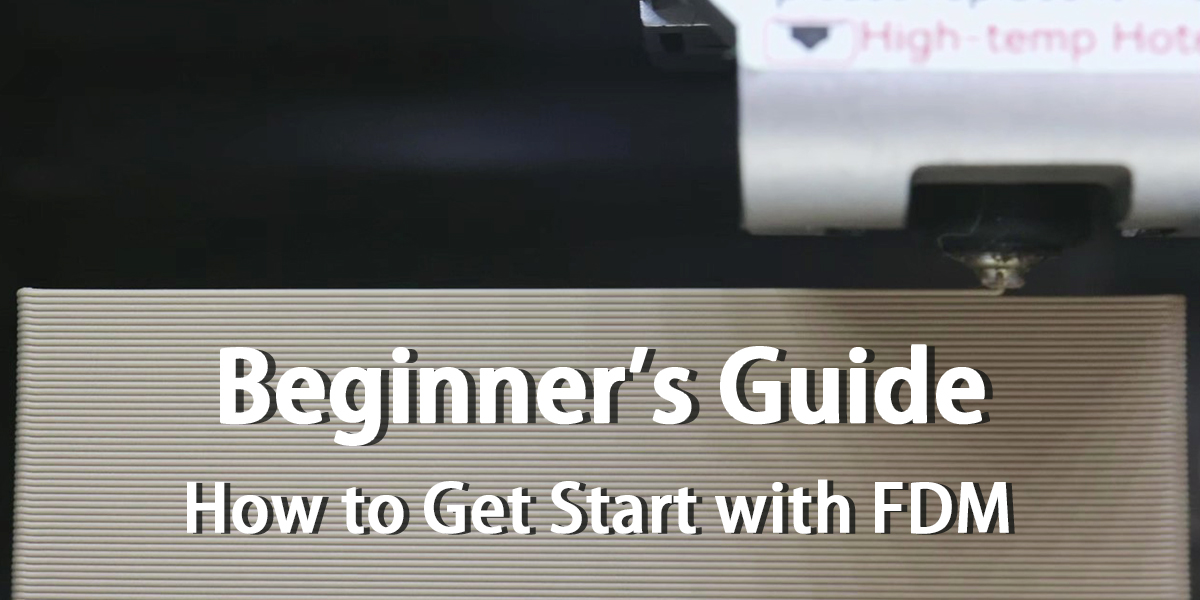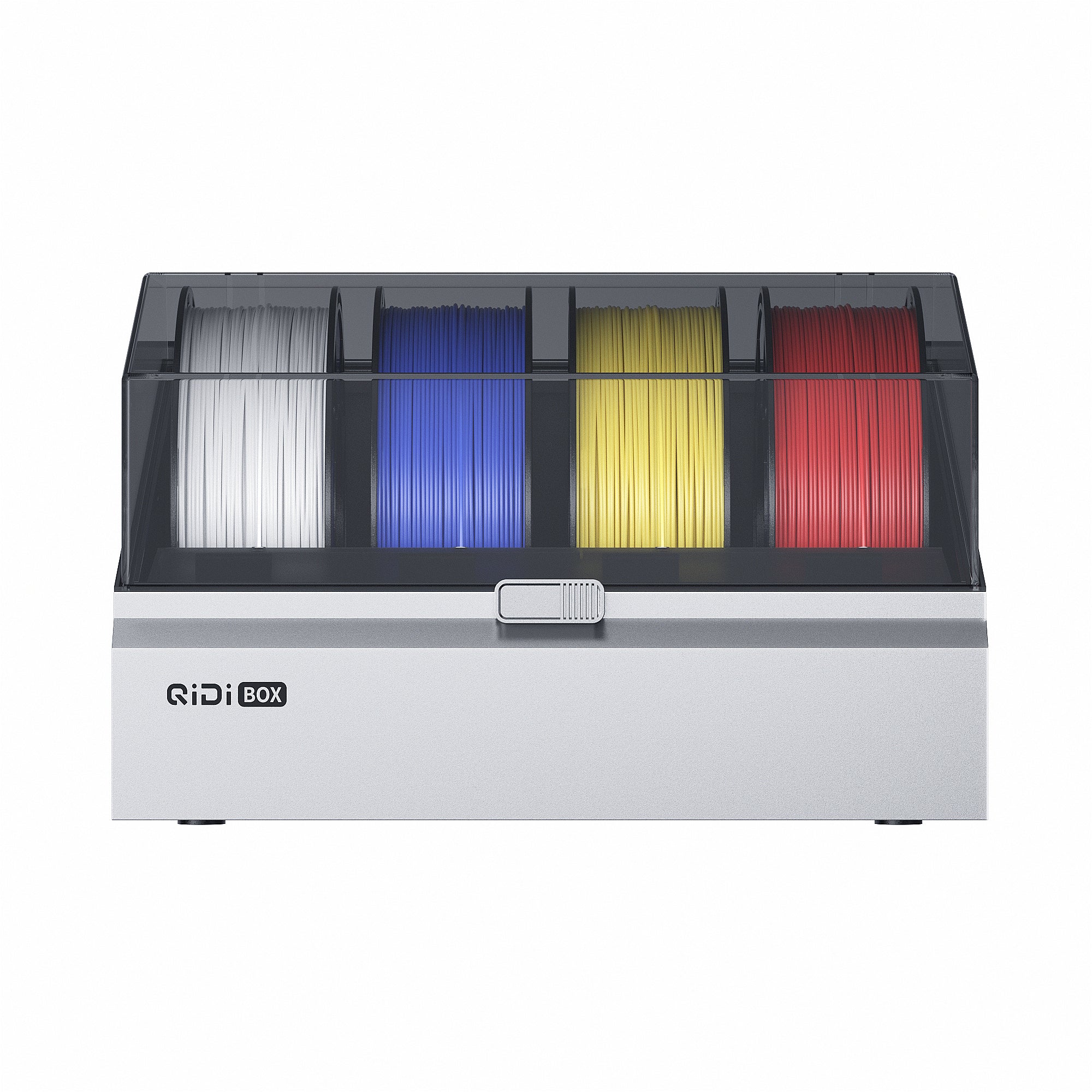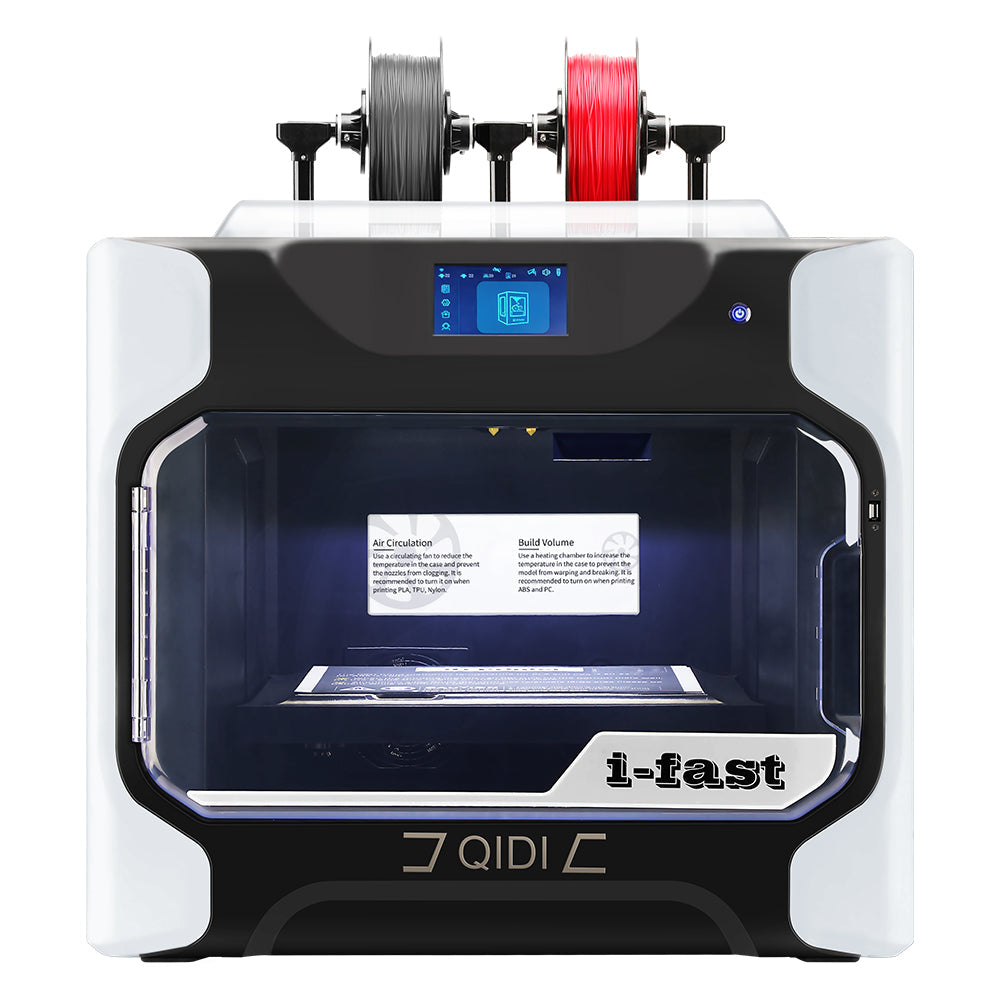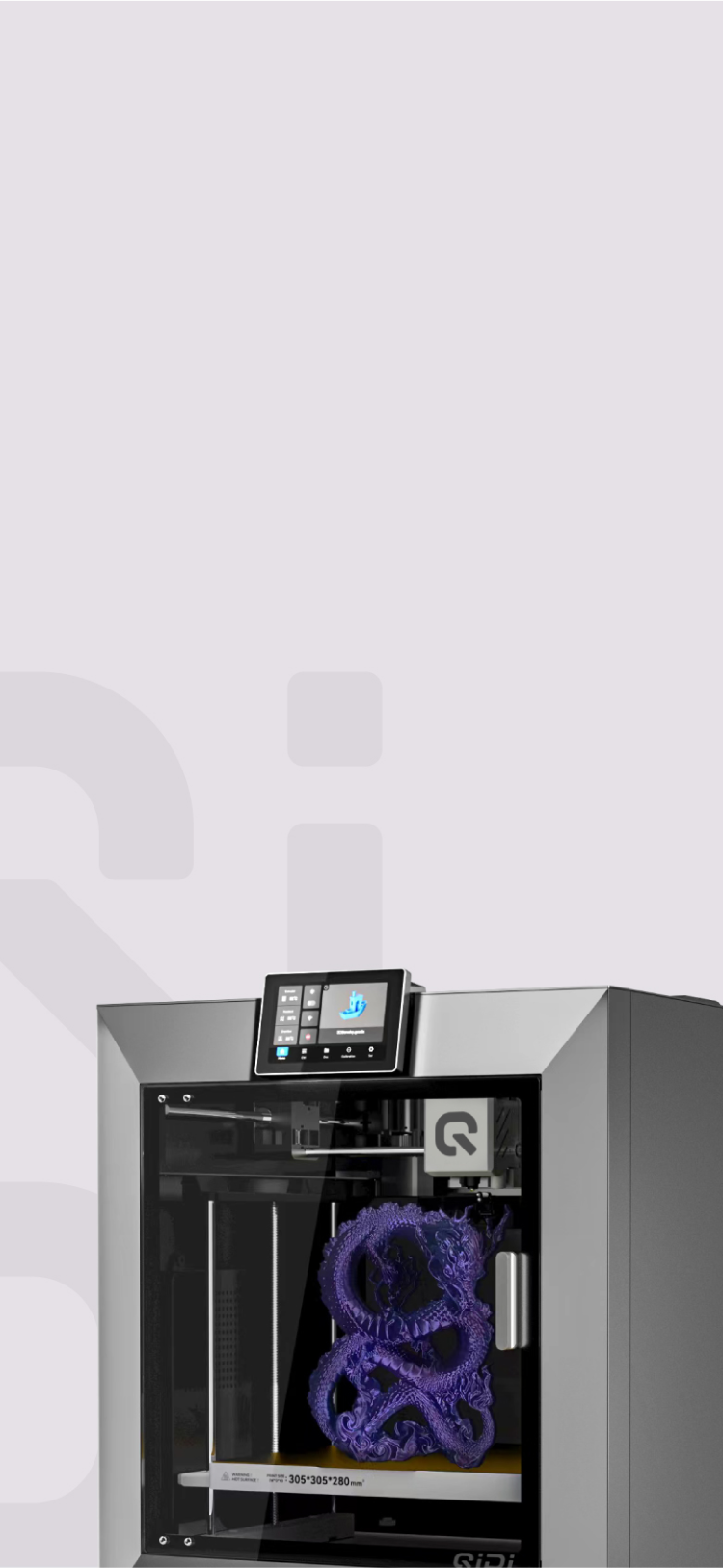A Beginner’s Guide to 3D Printing——How to Get Start with FDM

【Introduction】
Fused deposition modeling (FDM) is a material extrusion method of additive manufacturing where materials are extruded through a nozzle and joined together to create 3D objects. FDM is generally considered to be the simplest method of 3D printing, offering ease of use, efficiency and widespread popularity. Nowadays, FDM printers, which is simpler than resin 3D printing and much cheaper than powder based methods such as SLS, dominate the 3D printing market. QIDI Max3, Plus3 and Smart3 are the high speed FDM 3D printers. In order to enable novice 3D printing users to familiarize with the FDM printing process and use QIDI’s new high-speed FDM 3D printers better, the company compiles this beginner's guide.
【Application Areas】
3D printing has an extremely wide range of application scenarios. Nowadays, more and more companies are relying on 3D printing to prototype or produce products faster, which is beginning to have a significant impact on all areas of product development, research, education, etc.
-
Consumer Goods Industry
Due to the immense value of 3D printing in the business chain, many companies and retailers are using 3D printing to customize and design products faster and keep up with the ever-changing consumer market. Relying on the rapidity of production, they are also able to get them to market quickly. This includes, but is not limited to, footwear, furniture, jewelry, etc.
-
Medical Industry
With the rapid advancement of flexible manufacturing and innovations, 3D printing is now widely implemented for medical purposes, such as implant designs, surgical planning and training, and prosthetics. In this case, 3D printing is used in the field of radiotherapy is used to create custom devices for beam range modulation, 3D Conformal Radiation Therapy (3D CRT), or Brachytherapy application.
-
Automotive Industry
In the automotive industry, 3D printing has evolved from its beginnings of printing relatively simple prototypes of low-volume parts to customizing special parts and even 3D printing entire cars. Sometimes small scale models are printed to scale prior to the assembly process. This technology can also help the industry by producing prototypes quickly and reducing production costs and time.
-
Aerospace
In the aerospace industry, the use of 3D printing to develop and manufacture potential parts can result in lighter, stronger parts and can reduce manufacturing time by 70% and cost by 80%. In addition, 3D printing contributes to the environment by reducing metal waste by up to 95%.
-
Dental Applications
Researches indicate that the market for 3D printed dental applications is expected to grow significantly. Dental 3D printing applications include creating crowns, braces, bridge models, retainers and even orthodontic models.
-
Architecture
Ideally, 3D printing can quickly create scale models of buildings, and these physical models are much more popular than those rendered by computers on the screen. In addition, 3D printing can even create entire buildings and urban structures, such as the first pedestrian bridge 3D printed in Madrid, Spain.
-
Archeology and Art Restoration
3D printing for museums and archaeology can help replicate exact copies of artifacts for researchers to study. This technology is widely used by museums because there is a high risk of ancient artifacts breaking or being damaged during transportation. By scanning and 3D printing, the artifacts can be repaired.
-
Forensics
In the field of forensic science, the use of 3D printing is making breakthroughs in solving unsolved case files by instantly printing skulls, shoe prints, etc.
-
Film Industry
In the film industry, movie labs and companies are now more widely using 3D printing for make-up preparation and special effects to create characters, which not only dramatically reduces the cost of the process, but also reduces waste of the materials used.
-
Education
There are countless applications of 3D printing technology in education. Theoretical textbook knowledge in some advanced schools is being replaced by experiential, project-based learning. Students can use 3D printing technology to bring their ideas to life and complete projects that can contribute to society.
【Main Components】
-
Control Interface
Some modern 3D printers are equipped with control interface to show information and control the machine. Novice users can get printer information or learn about the printer's printing progress from it. QIDI’s 3D printers are equipped with well-informed touchscreens, which display debugging guides, basic information, option settings, etc., as well as preview images of the model after you upload the print file.
-
Build Platform
The build platform is essentially the surface on which parts are manufactured. The build platform usually includes a heat bed to allow parts to adhere to it more easily. QIDI Max3 and Plus3 have larger build platforms than comparable printers, with build volumes of up to 325*325*315mm³ and 280*280*270mm³. For a detailed description of the build volume, please see the official blog: QIDI Huge Build Volume.
-
Print Head
A printer can have one or more print heads on it, usually containing an extruder and a hot end. The extruder is the component responsible for pulling and pushing the filaments through the print head. The hot end contains heaters and nozzles, the former of which heat the filaments in order to extrude them from the latter.
【Filaments】
FDM 3D printers use filaments as the material used to manufacture parts. These filaments are essentially specially designed thermoplastics that are able to be melted and cooled but still maintain their structural integrity. Filaments typically come in two different diameters: 1.75 mm and 3 mm (or 2.85 mm). In addition to diameter, filaments also come in different spool sizes. A quick glance at the market reveals that the most common sizes are 500 grams, 750 grams, 1 kilogram, 2 kilograms, and 3 kilograms.

The most common types of filaments are PLA and ABS, which are stable, inexpensive, and are popular among many hobbyists. There are also some high-performance filaments, including ABS-GF25, PET-CF, etc., which have better mechanical properties and can be adapted to more demanding conditions. In order to make the filaments more adaptable to the needs of high-speed printers, QIDI has improved and upgraded the filaments. More information about QIDI new filaments can be found in the official website blog: QIDI New Filaments. If you would like more detailed information on filaments such as operating temperatures, print speeds, etc., please see QIDI’s Filament Guide.
【Steps】
-
Design or Acquire Models
If you want to 3D print a part, you must have a 3D model of that part. 3D models are created using 3D modeling software, such as CAD (Computer Aided Design) software. Here are some examples of popular 3D modeling programs:
- Fusion 360(free for non-commercial use CAD)
- SolidWorks(paid CAD)
- Blender(free surface and organic modeler)
For beginners, there are simpler CAD software options such as Tinkercad, a program that can be used by almost anyone without any prior experience.
However, most 3D printing beginners do not have the skills required to use such software. In this case, do not worry as there are other solutions. In recent years, as more and more people use 3D printers, many websites have emerged as repositories for 3D models. Here we have handpicked four of the most popular websites where you can download models for free: Thingiverse, Cults, Printables and Thangs. For a description and comparison of the websites, please check out the official blog: Best 3D Model Websites of 2023.
-
Prepare Models
Once the model is completed in the 3D design software, it still needs to be prepared using a special software, which is slicing software that converts the model into a machine instruction script. After importing the 3D model into the slicing software, you can adjust many important parameters, such as print speed and temperature, wall thickness, fill percentage, layer height, etc. The resulting file consists of G-code, the language of the 3D printer and CNC machine, which is essentially a long string of instructions that the 3D printer will follow to build the model.

QIDI has now released a new slicing software, QIDI Slicer, which is based on Prusa Research’s PrusaSlicer design and has very complete features. For a detailed introduction and guide, please see QIDI’s official Slicing Software Guide.
-
Supports
One of the primary functions of slicing software is to analyze the model and determine whether to generate support materials. Specifically, parts with severe overhangs require supports. Slicing software allows you to choose where and how dense to place the supports, and some slicing software even allows the user to choose different types of support structures that may be easier to remove or more stable.
-
Infill
Infill is the filling inside the part, which plays an important role in the strength, weight, and print time of the part. You can adjust the infill pattern and density using the slicing software. Infill density is the degree of filling inside the print, defined as a percentage. A print with 0% infill is hollow, while a print with 100% infill means it is completely solid. For most standard prints, a fill density of 15-50% is recommended. If you need to make the part stronger, try increasing the infill. Keep in mind that higher fill densities require more filaments and longer print times.
-
Upload Model Files
To upload model files, generally printers have two ways: wireless transmission and USB transmission. You need to convert the 3D model picture to 3D printing format, then upload the file after connecting your computer to the printer, or upload the file directly through the USB port. Start printing after the upload is completed.
【Troubleshooting Tips】
-
Warping
This typically occurs when the deposited materials cool, (slightly) shrink, and pull on the lower layers, causing them to peel off the printing platform board. -
Stringing
Excess stringing on the model can be caused by incorrect tuning, temperature or retraction settings. -
Nozzle Jams
If you hear strange noises coming from the print head and notice that the filaments are not being extruded by the nozzle (or are extruding weakly), the nozzle may be clogged. This can be caused by poor quality of filaments, poor temperature regulation, or type of filaments. -
Layer Shifting
This can be caused by a slight wobble in the Z-axis or excessive printing speed. -
Under-extrusion
Under-extrusion occurs when not enough filaments are extruded during the printing process. You will know you are experiencing this when you see gaps between layers of the print. -
Over-extrusion
Over-extrusion is the opposite problem, which squeezes out too much filament. This can lead to dropping layers, pimples and overall poor results.
For more common troubleshooting and repair tips, you can refer to QIDI's official Troubleshooting.
【Keep It Clean】
-
Platform Cleaning
The platform can be cleaned up by first shoveling out the remaining filaments on the hot bed with the Scraper and then gently wiping it down with a lint-free flannel.
-
Nozzle Residue Cleaning
Preheat the nozzle to the appropriate temperature according to the filaments, then slowly pull out the waste filaments inside with tweezers, or remove the nozzle for thorough cleaning.
-
Others
Tidy up the trash under the 3D printer chassis, lubricate the oil-deficient parts well, and wipe the oil on top of the motor, filament, and other components with a clean cloth.
【Recommendations】
If you are a beginner or are looking for cheap but high performance FDM 3D printers, QIDI Plus3 and Smart3 should serve you well. They are inexpensive yet have very powerful and high performance and are sure to give you an excellent first experience with 3D printing.
If you're more ambitious about 3D printing and have a bigger budget, you should definitely consider QIDI Max3, which has a great build volume, excellent print performance, and temperature controlled chamber to support your model printing of all sizes with a wide range of filaments.
For those who specialize in 3D printing or need a new machine for the store, QIDI Max3 will provide excellent reliability and versatility. With a nozzle temperature of up to 350 °C and closed temperature controlled chamber, it will meet the vast majority of your printing needs.
Whatever your goals or budget, there is definitely a machine for you. Welcome to the world of FDM printing!
【Connect with QIDI】
Have you had a great experience with QIDI that you would like to share? Please contact us at chloe@qd3dprinter.com. We look forward to hearing from you.
For more information about QIDI printers and services, browse our website, or schedule a demo with one of our 3D printing experts(karl@qd3dprinter.com).
If you encounter any problems in using QIDI 3D printers, please contact QIDI after-sales service. We will sincerely and patiently solve the problem for you.


 Q2
Q2
 Plus4
Plus4
 QIDI Box
QIDI Box
 Q1Pro
Q1Pro
![[Qidi X-CF Pro, speziell für den Druck von Kohlefaser und Nylon entwickelt] - [QIDI Online Shop DE]](http://eu.qidi3d.com/cdn/shop/products/X-MAX3-3D-Printer-02.png?v=1763120465) Max3
Max3
 I-Fast
I-Fast

